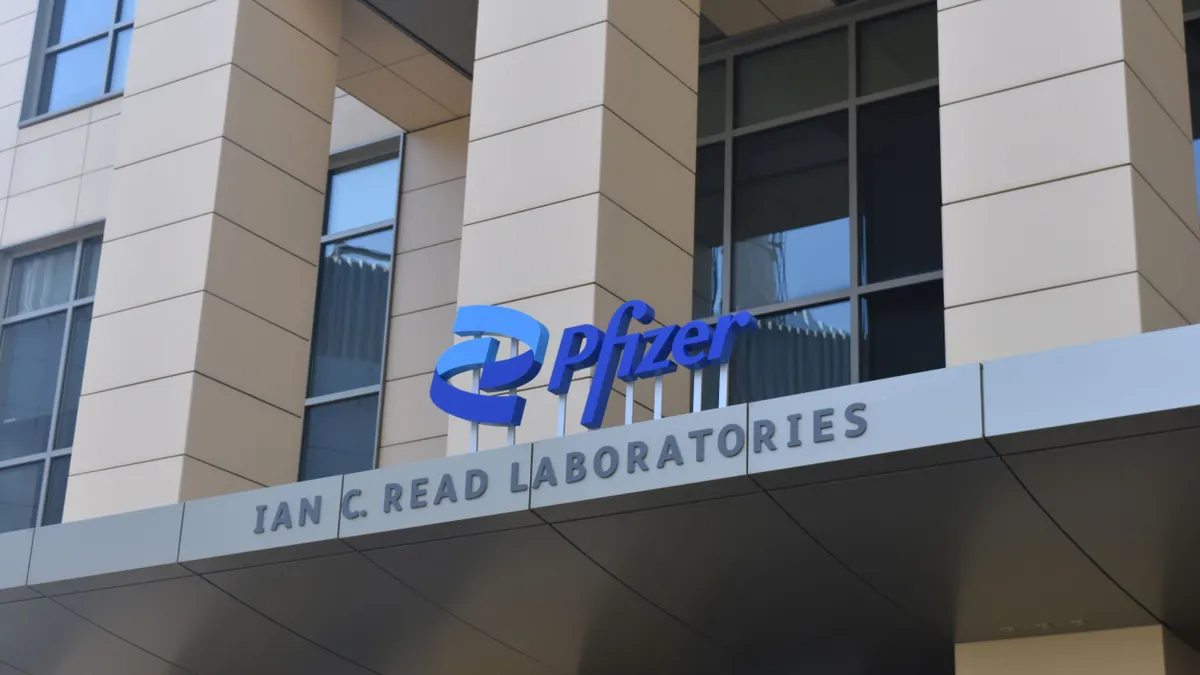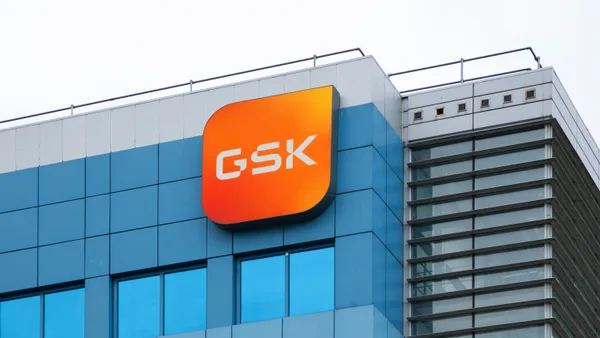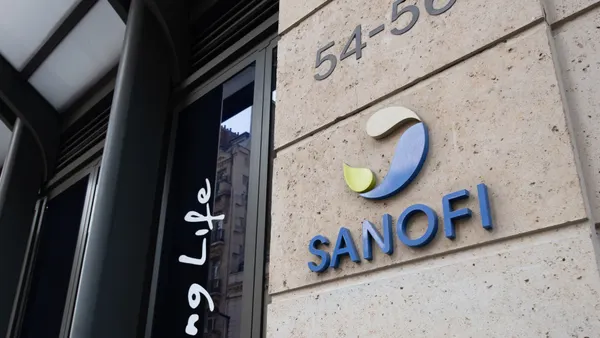Dive Brief:
- The Food and Drug Administration on Friday approved a new kind of medicine for hemophilia, clearing Pfizer’s Hympavzi for people with either the “A” or “B” forms of the inherited bleeding condition.
- Adults and children 12 years of age or older who haven’t developed proteins, or “inhibitors,” that prevent clotting drugs from working well are eligible to receive Hympavzi, the FDA said. The drug is taken once per week via an under-the-skin injection.
- Typically, medicines for hemophilia replace the blood clotting factor that people with the disease lack. By contrast, Hympavzi works by reducing activity of an anticoagulatory protein called tissue factor pathway inhibitor, or TFPI. This increases enzymes that help blood clump together, which in turn can prevent bleeding from occurring.
Dive Insight:
Approval of Hympavzi expands Pfizer’s portfolio of hemophilia medicines months after the company secured U.S. clearance of a gene therapy for the B form of the condition. Another of the company’s gene therapies, for the A form, recently met the goals of a late-stage study, too.
“We look forward to launching this latest medical breakthrough and to now offer three distinct classes of hemophilia medicines — an anti-TFPI, gene therapy, and recombinant factor treatments — that can meet the unique treatment needs of a wide range of patients,” said Aamir Malik, Pfizer’s U.S. commercial chief, in a statement.
The drug is part of a new generation of treatments that are reaching market, substantially expanding the options patients with the condition have. Roche’s Hemlibra has become a new preventive standard for people with hemophilia A, while Sanofi recently secured approval of a long-acting factor replacement drug called Altuviiio.
The new options have complicated the case for gene therapy, which promises a yearslong fix for the condition with a single infusion. Uptake of treatments from CSL Behring, BioMarin Pharmaceutical and, most recently, Pfizer, has been slow.
Hympavzi offers more flexibility, both in its weekly dosing and in its utility for both hemophilia A and B. In testing, preventive treatment with Pfizer’s drug proved superior to on-demand use of factor replacement, substantially lowering annualized bleeding rates. Bleeding rates with Hympavzi were lower compared to preventive factor treatment as well.
Treatment with Hympavzi was commonly associated with injection site reactions, headache and itching. The FDA’s label for the drug also warns of circulating blood clots, hypersensitivity and embryofetal toxicity.
Regulators in Europe recommended clearance for Hympavzi last month, sending it to the European Commission for marketing authorization.
The regulatory advances are good news for Pfizer, which has struggled through a series of research setbacks and doubts about its growth that recently culminated in a public challenge from activist investor Starboard Value.















